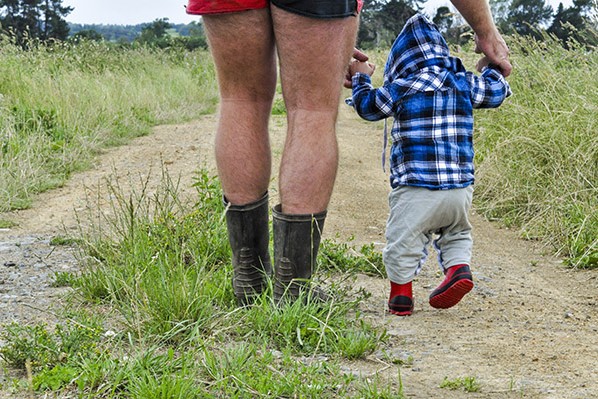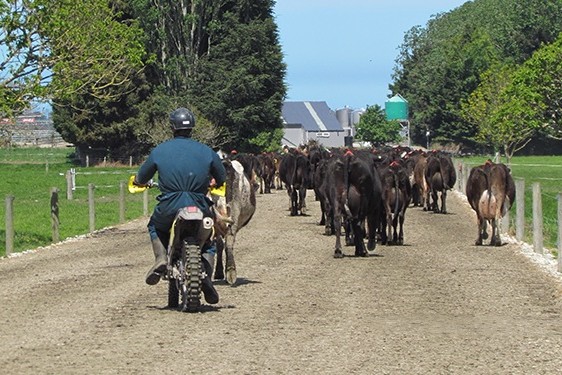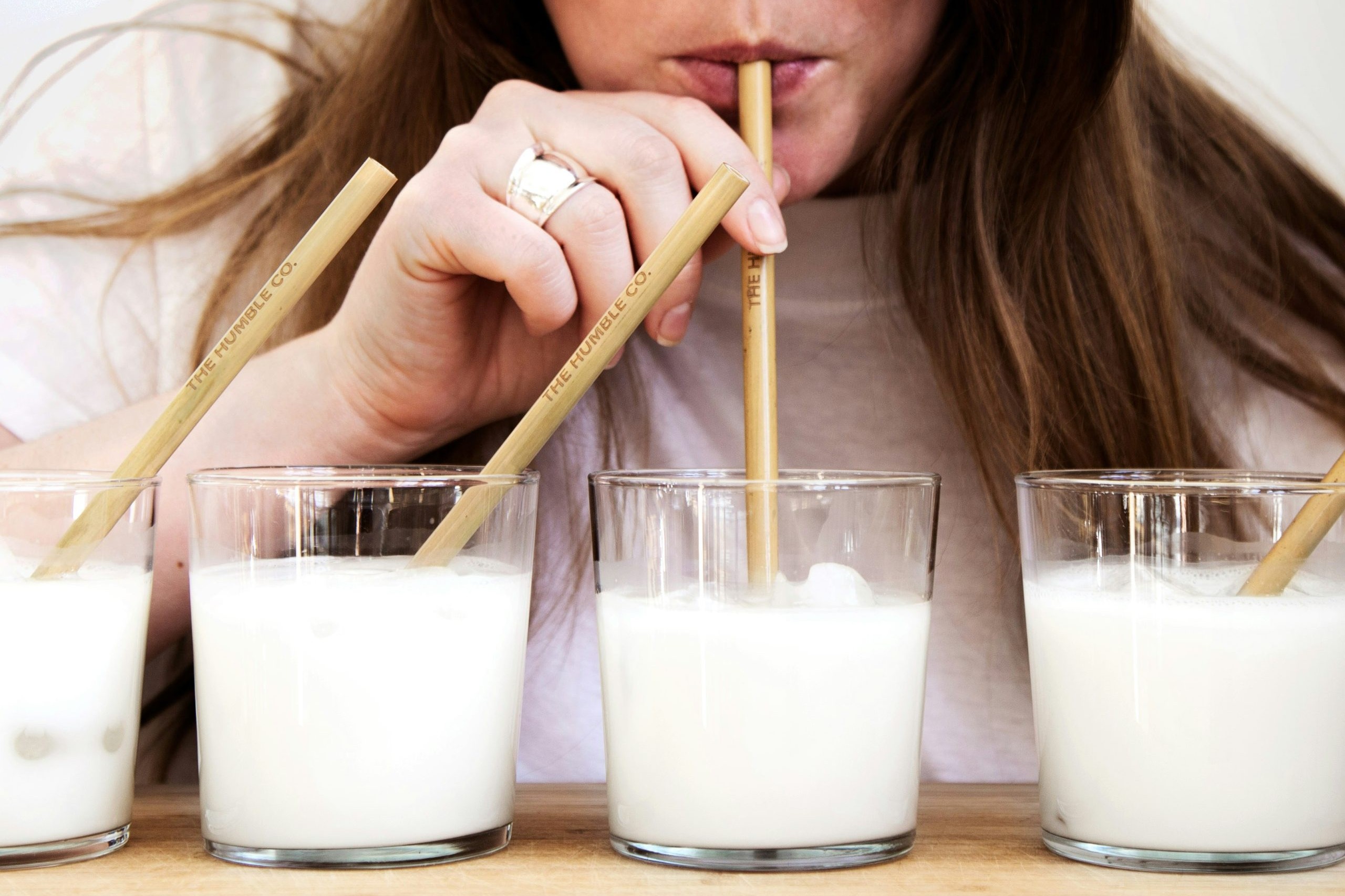By ELAINE FISHER
If farmers continue to handle increasing workloads with fewer staff, they are going to have to get a hell of a lot smarter about how they utilise their personal and employee resources, and technology could be part of the solution, says Al McCone, WorkSafe Engagement Lead for Agriculture.
“The rate of harm in the dairy industry is not significantly different now than it was four to five years ago. What worries me currently is that as it gets harder to find staff, that figure may actually go up again.
“One of the pieces of information we have about agriculture in general is that the less people are employed, the higher the rate of harm.”
Al says current and emerging technology can help reduce harm if it takes human frailty out of the equation.
“When you ask farmers what things can kill you onfarm, they know exactly what they are and how to avoid them. Most of that avoidance relies on being perfect and following procedures every time but that can be very ineffective in preventing serious harm as no one can be perfect all the time.
“One of the things we can do to prevent serious harm is to take human frailty out of the loop which is where tech can come in to put something in the way so people won’t get as damaged when things go wrong.”
Crush protection on quad bikes is one “low-tech” example.
“Humans make mistakes, quads are easy to roll. If you make a mistake, you might still get damaged, but the protection will stop you getting crushed to death. So far out of all the New Zealand and Australian examples we know of where crush protection has been on a quad that has rolled, no one has been crushed to death. Plenty of people say the crush protection has saved their life.”
Seat belts are another “low tech” safety device. “A lot of fatalities occur in farm vehicles and in probably half of those fatalities people were not wearing seat belts.”
A big issue, especially at this time of year, is fatigue.
“Maybe the kind of tech athletes wear to monitor their heart rate, blood pressure and blood sugar levels could in future be used to warn farmers when they need to take a break, have a meal or get some sleep.”
Spring is also the time when new employees, unfamiliar with the farm, are taken on and everyone is trying to get a whole lot of work done in the short hours of daylight.
“It’s when you are tired, racing around on the bike or quad to get jobs done in failing light, that you might not see the tape across the track – tape you may have put there but forgotten about.” A low-tech answer such as reflective tape or a string of solar powered flashing Christmas lights could save an accident.
Technology such as apps, says Al, is a good way of moving people up the hierarchy of control and not relying on them to do everything perfectly to protect themselves.
Phone apps linking all staff, which enable risks to be recorded when they are first identified, rather than forgotten in the humdrum of everyday life, are valuable. Those which include graphics, photos and maps are useful for staff who struggle with literacy or English as they can access information without having to read long printed notices.
“These apps are especially useful for people coming on to the farm such as stock drivers and fert spreaders who won’t be as familiar with the farm as everyone else. They are absolutely no replacement for face-to-face or over-the-phone conversations which enable hazards to be outlined and explained. Those are the sorts of conversations which save lives.”
Apps can be used to track people working on the farm, but Al says, with limited or non-existent cellphone coverage in many rural locations, cellphones should not be relied upon as the only means of contact.
“If someone is working by themselves, there is an obligation for the PCBU (Person Conducting a Business or Undertaking) to make sure there is a mechanism by which they can be contacted if something goes wrong.
“There are mechanisms such as a simple handheld device, which if it is not moving for a certain period of time, sends out a signal and if that’s not responded to, sends out a distress signal. I’ve seen this kind of system used successfully on farms in rugged territory.”
Al is aware of one cellphone provider looking at different, lower frequency signals to be used in places without good cellphone cover, to turn on and off irrigation equipment but which may also be used to send out emergency calls.
While technology can help keep people safe, Al also warns that it can be a hazard in itself, particularly if workers are turning to social media and the internet to meet their social needs.
“Some staff, perhaps young people who have not grown up in an isolated rural environment, can find it hard to work 12 to 14-hour days in a location kilometres from town.
“Some will resort to playing on-line games or engaging in chat rooms with their mates late into the night so when they get up early the next day they are already fatigued. Finding better ways to meet their social needs must also be considered”.
Even though drones for checking on or moving stock, autonomous vehicles and other hi-tech systems may one day be commonplace onfarm, people will always be part of the picture and the more farm safety savvy staff there are to spread the workload, the safer everyone should be.
Five people have died on New Zealand farms in workplace incidents up to early August this year.
Five people have died on New Zealand farms in workplace incidents up to early August this year:
- Aug 2021, Otago, Tractor Incident
- April 2021, aged 18 ,Otago, Farm vehicle rollover
- Jan 2021, aged 66, Otago, Ride-on tractor rollover
- Jan 2021, aged 89, Hawke’s Bay, Quad bike rollover
- Jan 2021, aged 54, Manawatu- Whanganui, Two-wheeled farm bike
Spring fatalities in 2020 included the following:
- Sept 2020, aged 33, Hawke’s Bay, Struck by rolling quad bike
- Sept 2020, aged 7, Bay of Plenty, Crushed by backing gate
- Sept 2020, aged 43, Hawke’s Bay, Struck by rolling tractor
- Sept 2020, aged 79, Waikato, Tractor roll over
- Aug 2020, aged 64, Taranaki, Fell from quad bike
A total of 20 onfarm fatalities were counted by WorkSafe in 2020.





